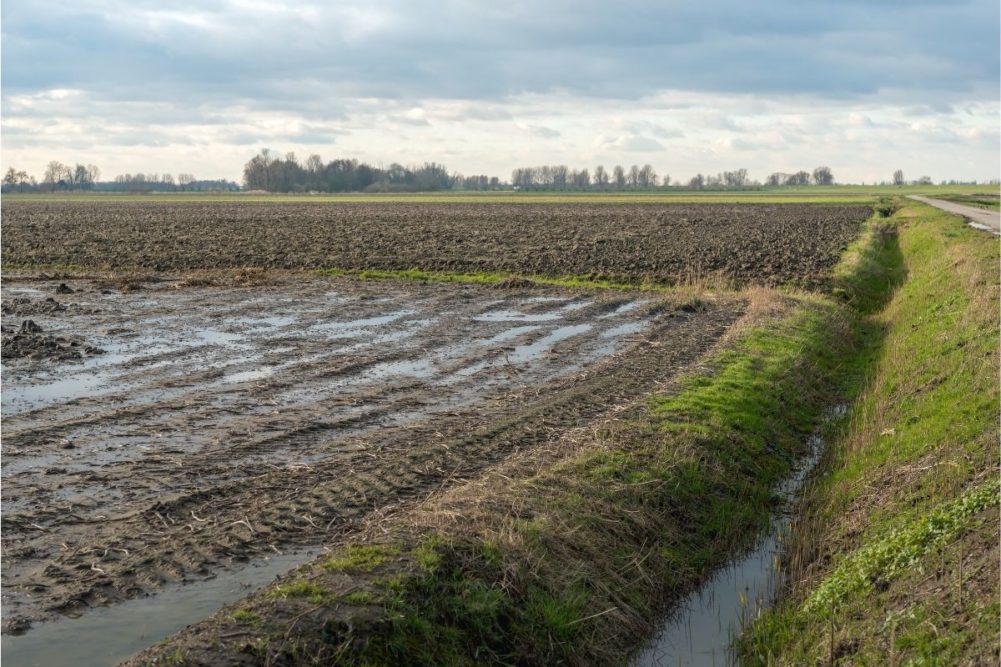KANSAS CITY, MISSOURI, US — A cool spring and wet conditions have contributed to sluggish progress in seeding the 2022 US corn and spring wheat crops. Both crops were behind the average planting pace in the US Department of Agriculture’s latest Crop Progress report released April 25.
Farmers, who prefer to plant corn in warm, dry soils, have encountered lingering cool temperatures across the US Corn Belt for much of the nascent planting season. As a result, corn planting has proceeded at the slowest pace since 2013.
The USDA indicated corn planting in the 18 states that seeded 92% of the 2021 crop was 7% completed on April 24, rising just three percentage points from the previous week, and falling short of 9% as the average of pre-report trade expectations. Seeding was well behind 16% by the same date a year earlier and about half the average progress for the date during the 2017-21 crop years, 15%. Of the 18 states, only four neared or exceeded the five-year average progress: Kansas (21% versus 21% average), Nebraska (10% versus 11% average) North Carolina (60% versus 55% as average) and Texas (69% versus 66% average). Farmers in five corn-growing states had yet to plant any corn: Michigan, Minnesota, North Dakota, Ohio and Wisconsin.
In the top US production states for corn, only Nebraska was near the average pace. Elsewhere in the Corn Belt, planting completion by April 24 was 2% in Iowa (18% a year ago, 15% as the recent five-year average), 1% in South Dakota (4%, 3%), 2% in Illinois, (21%, 21%) and 1% in Indiana (13%, 10%).
Meteorologists said cool temperatures aren’t vacating the Central states or the Upper Midwest just yet, although there was little to no precipitation forecast for the last week of April or first week of May. That should provide farmers a window for planting even if thermometers show temperatures that aren’t quite ideal.
Meanwhile, seeding of the spring wheat crop has proceeded at a slower-than-normal pace. Some producers had kicked off planting in a timely fashion only to be stymied immediately by a blizzard that dropped a blanket of snow between 20 and 40 inches over North Dakota in the second week of April. In the third week of April, difficult weather continued in various combinations of rain, sleet, snow and below-normal temperatures. Farmers welcomed the moisture, increasing the hope that 2022 wouldn’t be a repeat of the extremely dry 2021 season. But the timing was unfortunate in that the precipitation essentially knocked field work off the books for two to three weeks, the North Dakota Wheat Commission said in an April 26 progress report.
The April 25 USDA Crop Progress and Conditions report showed 13% of the intended US spring wheat acreage had been planted, up from 8% the prior week, but well below the speedy 2021 pace of 27%. Most of the progress in the third week of April was made in South Dakota and Montana, with fieldwork in North Dakota and Minnesota “at a standstill,” the NDWC said.
In the individual states that collectively planted 100% of the 2021 spring wheat crop, planting completion by April 24 was 4% in North Dakota (21% a year ago, 8% as the recent five-year average for the date), 36% in South Dakota (61%, 35%), 73% in Washington (79%, 58%), 37% in Idaho (61%, 53%), 18% in Montana (19%, 14%) and 0% in Minnesota (18%, 8%).
North Dakota durum growers in mid-April were able to seed about 1% of that state’s durum crop before field activity was put on hold for weather, the NDWC said.






